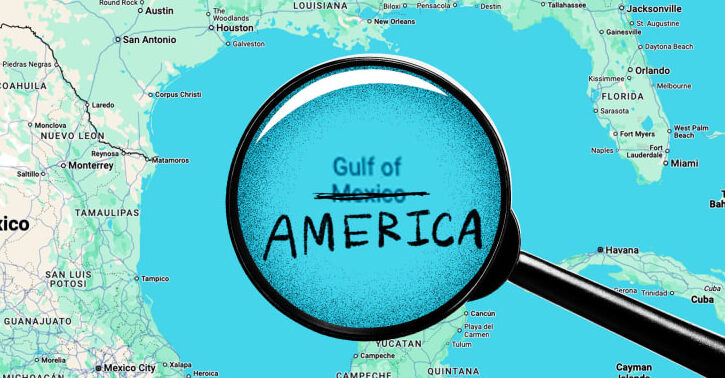In a move that has left cartographers scratching their heads and meme creators rubbing their hands in glee, Google Maps has decided to rebrand the Gulf of Mexico as the “Gulf of America” for its U.S. users. Yes, you read that right. The body of water that has been known as the Gulf of Mexico since, well, forever, is now getting a patriotic makeover—but only if you’re logging in from the land of the free and the home of the brave.
The change comes hot on the heels of an executive order signed by former President Donald Trump during his first day back in office. Because apparently, renaming federal buildings after himself wasn’t enough—now he’s coming for the oceans. Google, ever the obedient digital citizen, confirmed it would update its maps to reflect the new name as soon as the U.S. government made it official. And lo and behold, the U.S. Geological Survey updated its Geographic Names Information System (GNIS) over the weekend, prompting Google to roll out the change faster than you can say “Make America Navigate Again.”
But here’s where it gets spicy: the new name is only for U.S. users. If you’re in Mexico, you’ll still see the Gulf of Mexico, because, well, it’s their gulf too. And for the rest of the world? Google is serving up a diplomatic compromise, showing both names with “Gulf of Mexico” taking the lead and “Gulf of America” awkwardly trailing in parentheses, like a forgotten middle name.
Secretary of the Interior Doug Burgum couldn’t contain his excitement, posting a screenshot of the updated U.S. Geological Survey website with the caption, “It’s official!” Meanwhile, the internet collectively rolled its eyes. Social media was quick to react, with one user quipping, “Next up: the Atlantic Ocean renamed to ‘Trump’s Pond.’” Another added, “Can’t wait for the Pacific to become the ‘Bigger Better America Ocean.’”
This isn’t the first time Google has played the name game. The tech giant has a history of juggling naming disputes with the finesse of a circus performer. Take the Persian Gulf, for example. Depending on where you are, Google Maps will show it as either the Persian Gulf or the Arabian Gulf, because nothing says “neutral” like letting geopolitics dictate your map labels.
But let’s be real—this latest change feels less like a diplomatic gesture and more like a plot twist in a satirical novel. Imagine the confusion of a U.S. tourist in Mexico trying to explain to a local that they’re looking for the Gulf of America. “You mean the Gulf of Mexico?” the local might ask, to which the tourist would reply, “No, no, it’s the Gulf of America now. Trump said so.” Cue the awkward silence.
Of course, not everyone is amused. Critics have pointed out that the change is yet another example of American exceptionalism run amok. “Next thing you know, they’ll be renaming the Eiffel Tower the ‘Freedom Spike,’” joked one Twitter user.
For now, the Gulf of America (or Gulf of Mexico, depending on your location and political leanings) remains a shining example of how technology, politics, and a dash of absurdity can collide in the digital age. So, the next time you pull up Google Maps, take a moment to appreciate the chaos. After all, in a world where even oceans aren’t safe from rebranding, anything is possible.
And who knows? Maybe one day we’ll all be sipping margaritas by the Gulf of America, wondering how we got here. Cheers to that.
